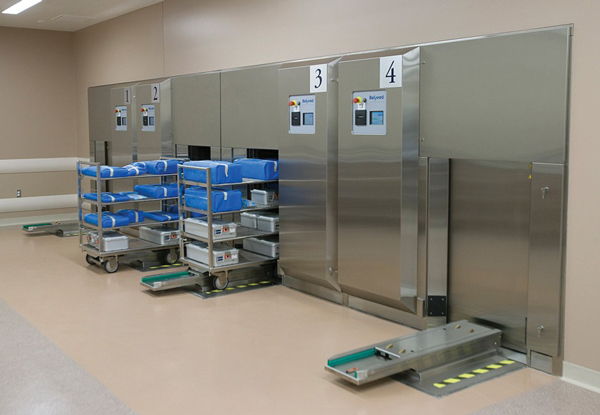 Sterilization & Disinfection
Sterilization & Disinfection
Effect of alcohol flush on endoscope channel drying, microbial outgrowth
Editor's Note This study by researchers at Steris, Mentor, Ohio, finds that flushing flexible endoscope channels with reduced concentrations of alcohol may prevent microbial outgrowth while reducing drying time. Among the findings: Flushing endoscope channels with isopropyl alcohol (70%-30% concentration) prevented Pseudomonas aeruginosa outgrowth during storage. A 70% alcohol concentration…
The Joint Commission seeking comments on proposed new IC requirements
Editor's Note The Joint Commission, on June 21, announced that there is still time to comment on its proposed new Infection Control (IC) chapter requirements for hospitals and critical access hospitals. The goal of revising the chapter is to align the IC standards and elements of performance more closely with…
Continued increases in HAIs during second year of COVID-19
Editor's Note This study from the Centers for Disease Control and Prevention, Atlanta, finds that standardized infection ratios (SIRs) were significantly higher during COVID-19 than during the prepandemic period, and the incidence of healthcare associated infections (HAIs) was elevated during periods of high COVID-19 hospitalizations. The analysis revealed elevated incidence…
FDA letter on supply shortage of nonsterile, single-use pneumatic tourniquet cuffs
Editor's Note In a June 5 letter to healthcare providers, the Food and Drug Administration (FDA) says it is aware of US healthcare facilities and providers experiencing supply constraints of nonsterile, single-use pneumatic tourniquet cuffs. The cuffs are used in elective limb surgeries and in emergency and trauma settings. During…
Use of AI to predict risk of HAIs
Editor's Note This study led by researchers at the Mayo Clinic Arizona finds that a healthcare associated infection (HAI) risk prediction artificial intelligence (AI) model can estimate individualized risk of infection by taking into account a patient’s clinical features and features of similar patients. The model was trained on 38,327…
New borescope training model improves SPD personnel knowledge, complex skills
Editor's Note This pilot study by epidemiologist Cori L. Ofstead, MSPH, and colleagues finds that a new borescope training model improves sterile processing department (SPD) personnel mastery and retention of complex skills. A total of nine certified SPD personnel were involved in the study. Training focused on borescope visual inspection…
The role of infection prevention when auditing SPD

Infection preventionists (IPs) play a vital role in healthcare, especially in the sterile processing department (SPD), where preventing infection and cross-contamination is paramount. As infection prevention advocates, SPD personnel are responsible for ensuring that surgical instruments and other medical devices are properly sterilized and free of harmful microorganisms before use.…
Effect of COVID-19 precautions on postop SSIs
Editor's Note This study from the Mayo Clinic finds that perioperative COVID-19 precautions did not significantly reduce the risk of surgical site infections (SSIs). The analysis included 29,904 patients who had colorectal, hysterectomy, hip, and knee prosthesis procedures at the Mayo Clinic’s multicenter institution between January 1, 2018 and December…
SHEA: New SSI guidance recommends antibiotics be discontinued after incision is closed
Editor's Note This update to the 2014 "Strategies to Prevent Surgical Site Infections in Acute Care Hospitals" recommends that antibiotics be discontinued after a patient’s incision has been closed in the OR, even if drains are present. The expert panel members writing the update add that continuing antibiotics after closure…
Leapfrog: HAIs increased during COVID-19 pandemic
Editor's Note The Leapfrog Group, on May 3, announced that its new Hospital Safety Grade shows a significant increase in healthcare-associated infections (HAIs) during the COVID-19 pandemic, spiking to a 5-year high and remaining high. Their analysis found that the average: Central line-associated bloodstream infection (CLABSI) ratio increased 60% Methicillin-resistant…

 Free Daily News
Free Daily News